24/7 Access
Complete your online training 24/7. Training is self-directed.
Earn Certificates
Earn a certificate of training for completing your required annual CACFP training.
Any Location
Complete your training from any location. All you need is Internet access.
Online Course Catalog

Medication Administration in a Child Care Setting (BTG-2001)
Effective medication administration is a vital responsibility for child care providers, ensuring the health and safety of children in their care. This comprehensive online course equips early childhood educators with the knowledge and skills needed to confidently and safely administer medication in a child care setting. Through eight engaging lessons, participants will explore critical topics, including legal responsibilities, the “Six Rights” of medication administration, medication classifications, preparation and procedures, accurate documentation, and strategies for managing medication errors. Additionally, the course covers the effects of medication, the proper use of emergency medications, and essential guidelines for storage, disposal, and emergency protocols. By the end of this course, learners will be well-prepared to implement best practices in medication administration, fostering a safe and supportive environment for children. This training meets regulatory requirements and supports professional development for child care providers.

CACFP Annual Training for Centers (BTG-210)
CACFP Annual Training for Child Care Centers is a 3 hour comprehensive online course designed to provide annual required training for sponsors participating in the CACFP.

CACFP Annual Training for Day Care Homes (BTG-211)
CACFP Annual Training for Homes is a 3 hour comprehensive online course designed to provide annual required training on meal patterns, the reimbursement process, accurate meal counts, claims submission, and recordkeeping for day care homes participating in the CACFP.

Standardized Recipe Basics for Child Nutrition Programs (BTG-323)
This course is designed to build capacity among child nutrition professionals to standardize recipes. It provides a basic overview of standardized recipes, reasons that child nutrition professionals need to use standardized recipes, and an explanation of how to standardize a recipe. Participants will understand the key elements of standardizing recipes and the benefits to using them in their child nutrition program.

Food for Thought: Navigating CACFP Recordkeeping for Success (BTG-586)
In this course, participants will gain an understanding of CACFP recordkeeping requirements and best practices, equipping them with the knowledge and tools needed to maintain meticulous records while optimizing meal service operations.
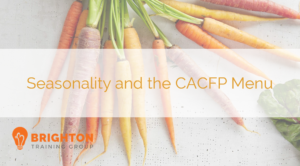
Seasonality and the CACFP Menu (BTG-511)
How can you make an impact to your budget and your menu in one change? Plan your menus according to the seasons. In this one hour session, participants will learn about growing seasons for different regions of the US, how to plan menus with built in flexibility for seasonality, and maintain CACFP meal pattern compliance.
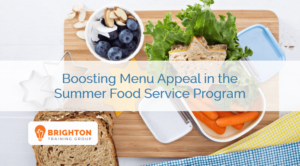
Boosting Menu Appeal in the SFSP (BTG-176)
Helping children get the nutrition they need for health and growth is what summer meals are all about. Creating appealing menus can help kids fuel up, have fun, and get the nutrition they need for growth and good health. This course will explore many ways sponsors can plan menus that kids will enjoy such as using local fruits and vegetables, adding variety and color, and making healthy meals fun!

Effective Staff Training for Child Nutrition Program Success (BTG-567)
This course is designed to provide effective training tips for child nutrition program staff trainers. The course will review the trainer’s role and the necessary competencies, learning styles, and effective training strategies for in-person and virtual training to enhance their training effectiveness and create a conducive learning environment.
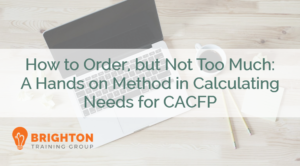
How To Order, But Not Too Much: A Hands On Method In Calculating Quantity Needs For CACFP (BTG-507)
Having excess inventory on hand can be costly, but not having enough inventory on hand can result in not serving enough food, and ultimately non-compliance and findings. In this one-hour session, learn how to calculate adequate inventory needs, while also learning how often inventory needs to be completed and best practices for stock rotation.

Civil Rights for Sponsoring Organizations (BTG-250)
Program institutions and facilities receiving federal financial assistance are required to comply with federal civil rights laws to ensure all Child Nutrition participants have equal access to all benefits and services. This course will review Civil Rights regulations, and provide all information necessary to ensure that your program is in compliance with these requirements.

Addressing Child Health Equity (BTG-568)
This course provides a comprehensive understanding of social determinants of health and their impact on health equity for children. It explores the various factors that influence health outcomes, including economic stability, education access and quality, healthcare access and quality, neighborhood and built environment, and social and community context. The course emphasizes the role of child nutrition programs, the importance of addressing health disparities, and promoting equitable opportunities for children.
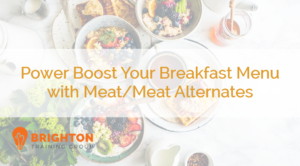
Power Boost your Breakfast Menu with Meat/Meat Alternates (BTG-518)
What an exciting opportunity to impact children’s nutrition and health by being able to incorporate meat and meat alternates into your breakfast menu. Throughout this interactive one-hour course, participants will explore meat/meat alterations, their health benefits, and learn best practices to incorporate them into their CACFP breakfast menus.
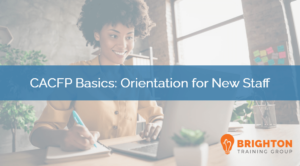
CACFP Basics: Orientation for New Staff (BTG-557)
Do you wonder how CACFP benefits the participants in your organization? Are you unfamiliar with the goal of CACFP? Are you wondering what CACFP even means? Then this is the course for you! Over the next hour, we will dig into the basics of the Child and Adult Care Food Program and how it supports children and adults each and every day.

Milk Substitutions: Serving Creditable Milk Alternatives in Child Nutrition Programs (BTG-571)
This is a 1-hour training course designed to provide child nutrition program operators with the information they need to accommodate participants’ dietary needs as it pertains to fluid milk consumption. This training covers important topics including creditable milk types per age group and meal service, methods for accommodating special dietary requests and disabilities, and allowable fluid milk substitutions.

Trailblazing the Fruit and Vegetable Frontier (BTG-521)
With Fruit and Vegetables now separate components, there are endless possibilities in incorporating great nutrition into your CACFP menus. Discover the great nutrition fruits and vegetables provide, which are the best sources of Vitamin C and A, and how often you should plan to serve them in your menus. Learn new and exciting best practices for introducing new fruits and vegetables on your menus across all meal services, as well as innovative preparation techniques.

Cheering On Healthy Eaters (BTG-584)
Participants will learn behavioral strategies to motivate children to make healthy choices. Participants will understand how to be good role models for healthy eating and engage children in fun activities that inspire curiosity about food.
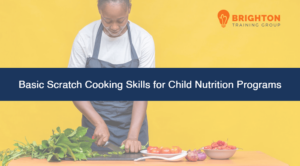
Basic Scratch Cooking Skills for Child Nutrition Programs (BTG-569)
Basic Scratch Cooking Skills for Child Nutrition Programs is a 1-hour training course designed to provide anyone with cooking responsibilities in Child Nutrition Programs with the basic skills they need to begin preparing food. This training covers important topics including the benefits of cooking from scratch, basic knife types and knife cuts, different kinds of cooking methods, and a brief overview of developing standardized recipes and using cycle menus.
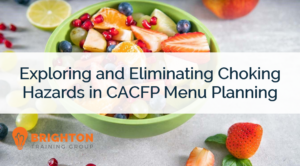
Exploring and Eliminating Choking Hazards in CACFP Menu Planning (BTG-520)
Did you know that choking is the 4th leading cause of death for children under age 5? Have you ever thought about what might be a choking hazard in your CACFP Menu? In this engaging one hour study, participants will learn common food choking hazards, explore cooking methods to prevent choking hazards, and learn best practice service methods to prevent choking in their child care setting.
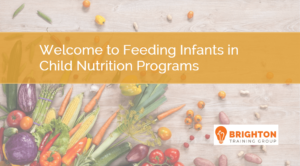
Feeding Infants in Child Nutrition Programs (BTG-583)
This course will examine the growth and development of infants and how to make healthy food choices for infants to support this development. We will review breastfeeding, bottle feeding and introduction to solid foods. Participants will be able to select healthy menus and understand the CACFP meal patterns for infants.
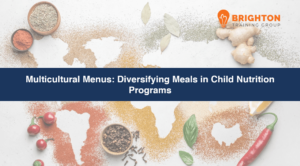
Diversifying Meals in Child Nutrition Programs (BTG-570)
Multicultural Menus: Diversifying Meals in Child Nutrition Programs is a 1-hour training course designed to provide Child Nutrition Program operators with the skills they need to incorporate regionally diverse meals into their program. This training covers important topics including the importance of providing multicultural meals, methods of implementing a taste test, and ways to adapt menus to provide a range of multicultural dishes.
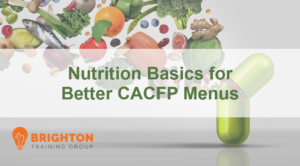
Nutrition Basics for Better CACFP Menu Planning (BTG-502)
Once you have the CACFP meal pattern compliance mastered, the next step in planning CACFP meals is making sure you cover all the basic nutrition needs. In this one hour session, participants will learn the importance of where the CACFP meal pattern comes from and how to incorporate basic nutrition into CACFP menu planning mastery.

CACFP Snacks in a Jiffy! (BTG-519)
Want to serve CACFP Snacks, but you are limited on preparation space? Want to learn what snacks you can serve in a pinch when you are short on staff? In this one hour session, participants will learn how to provide variety in a CACFP menu, while still striving for optimal nutrition with a snack meal that requires little to no preparation.
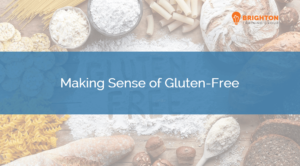
Making Sense of Gluten-Free (BTG-581)
This training provides an overview of gluten-free diets, including identifying gluten in food and preventing cross-contact. Participants will be able to identify foods that contain gluten, find gluten on food labels and determine strategies to meet the needs of children on gluten-free diets.

Civil Rights Training for the Child Nutrition Programs (BTG-150)
Program institutions and facilities receiving federal financial assistance are required to comply with federal civil rights laws to ensure all child nutrition program participants have equal access to all benefits and services. This course will review civil rights regulations, and provide all information necessary to ensure that your program is in compliance with these requirements.
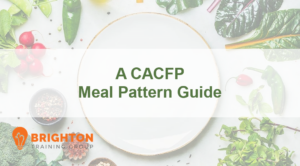
A CACFP Meal Pattern Guide (BTG-505)
One of the hardest parts of planning a CACFP menu is understanding if a food is creditable or not and how much you need to serve. In this brief overview, participants will learn about tools to guide them to determine if a food is creditable to the CACFP meal pattern, and how much they need to serve to be in compliance.

Getting Everyone on the Same Plate: Teaching Teachers About the Child and Adult Care Food Program (BTG-503)
This training is all about the Child and Adult Care Food Program or CACFP. The course covers topics such as what the CACFP program is and what it does, who is eligible to sponsor or offer the CACFP and which children are eligible to participate or receive meals through the program. In addition, the course covers CACFP meal patterns, how to accommodate children with disabilities that affect the diet and recordkeeping requirements that are important for everyone involved with the CACFP to be aware of – even teachers!
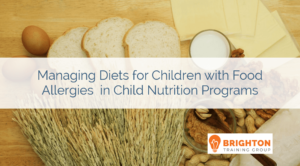
Managing Diets for Children with Food Allergies in Child Nutrition Programs (BTG-580)
This training provides an overview of food allergies, an explanation of regulations for labeling food allergens, and a description of best practices for food allergy plans. Participants will practice finding common allergens on ingredient lists and identify practices that will keep children with food allergies from coming into contact with food that could trigger a reaction.

A CACFP Infant Meal Pattern Guide (BTG-506)
One of the hardest parts of planning a CACFP menu is understanding if a food is creditable or not and how much you need to serve. In this brief overview, participants will learn about tools to guide them to determine if an infant food is creditable to the CACFP meal pattern, and how much they need to serve to be in compliance.

Enhancing Meal Appeal For CACFP – Feeding Their Senses! (BTG-501)
Explore how to enhance your CACFP meals and decrease food waste by planning and preparing meals that appeal to all 5 senses. In this one hour session, participants will learn how to examine menus and prepare meals that not only taste great, but look, smell, feel and even sound great!

Food Safety Essentials (BTG-555)
Spend the next hour with us learning about basic food safety and sanitation principles! We’ll review why food safety is an integral part of your operations, the dangers of foodborne illness, and how to apply these lessons to your day-to-day tasks and activities. This course will also cover motivating employees to follow food safety processes and protocols. Feeding children and adults is a noble profession – don’t let a food safety slip mar the reputation of your program!

All Aboard The Whole Grain Express! (BTG-515)
With a destination of great nutrition and better lifestyles, learning how to incorporate whole grains into your CACFP menu can be a journey. In this one-hour session, participants will punch their ticket and board the whole grain express train, learning about where whole grains come from, how to incorporate them into their menu, and best practices for the preparation methods.
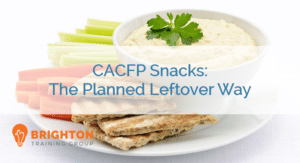
CACFP Snacks: The Planned Leftover Way (BTG-517)
Wanting to learn how to optimize your CACFP Snack Menu, inventory, and labor? Through this one hour session, participants will learn how to use pre-planning methods to optimize their labor hours, kitchen space and equipment, and inventory to build a CACFP Snack Menu from semi-scratch cooking methods while being mindful of budget and nutrition.

Experiencing Food through the Five Senses (BTG-552)
Children learn about the world around them by experiencing and exploring their environments. Giving children opportunities to explore and experience their food by touching, tasting, smelling, seeing and hearing it taps into their natural curiosity and uses their preferred mode of learning to teach them about good nutrition from an early age. What they learn about food and nutrition can have lasting effects into adulthood. Let’s spend the next hour learning about the five senses and how to pique that natural curiosity with fun and easy sensory-based food and nutrition education activities!

Healthy Food Preparation Techniques And CACFP Menu Planning (BTG-516)
The first challenge is planning a CACFP Menu, but the challenge can continue in figuring out how to prepare food in healthy ways. Learning how to prepare food in a healthy way can maintain optimal nutrition and increase food consumption while building lifelong healthy eating habits for children.

Spice It Up! Infusing Flavor In Your CACFP Menus (BTG-510)
Are your meals lackluster? Want to increase flavor, decrease plate waste, and increase meal consumption without making a huge impact to your budget? Step into the world of flavor, spices and seasonings! Take a trip through the herb garden and around the seasoning world while learning how to incorporate herbs and spices into your CACFP menus.

Successful Monitoring (BTG-585)
This course will give CACFP sponsor monitors an outline of their responsibilities for conducting successful reviews of centers or family day care homes. They will better understand the requirements for reviews and how to assess compliance with USDA regulations. Finally, they will be able to recognize problems that would result in review findings.
